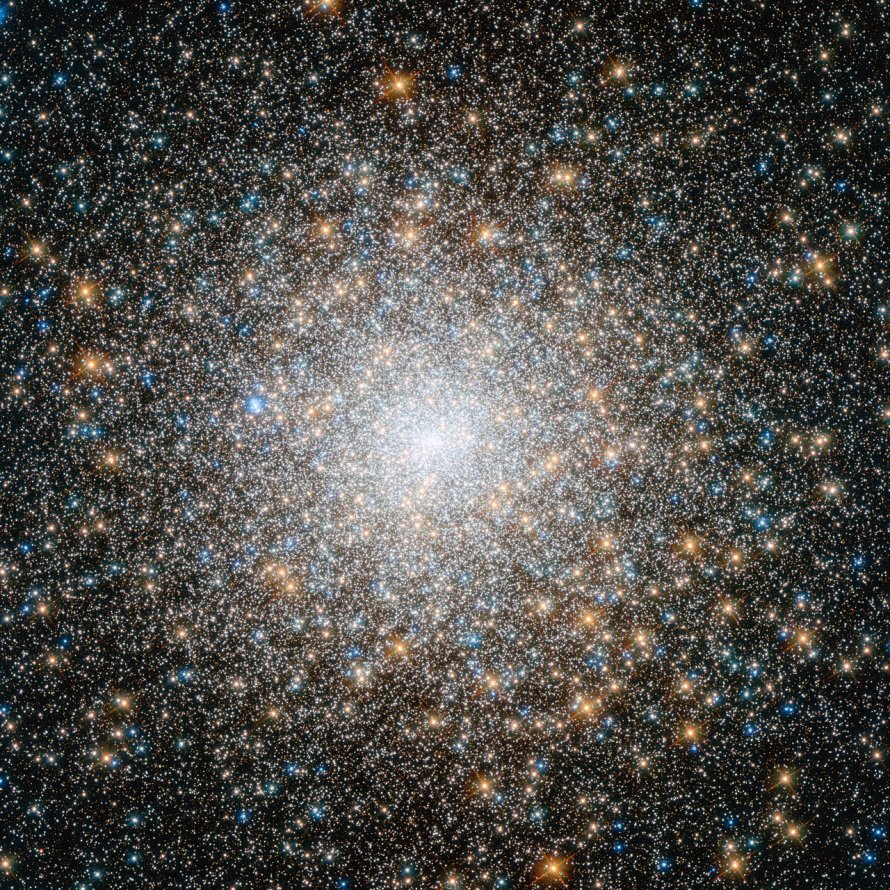M15 (NGC 7078) - Great Pegasus Cluster
Messier 15 (NGC 7078), also known as the Great Pegasus Cluster, is a globular cluster located in the constellation Pegasus, in the Galactic Center of the Milky Way Galaxy in the Local Group of galaxies. M15 is 33000 light years away from Earth.
M15 is best viewed during early spring, is magnitude 6.4, and can be viewed with binoculars. M15 is 18' in apparent size. For reference, the full moon is 30'.
Observing difficulty: Easy
- Name:
- Great Pegasus Cluster
- Type:
- globular cluster
- Constellation:
- Pegasus
- NGC or IC:
- NGC 7078
- Magnitude:
- 6.4
- Viewing:
- binoculars
- Size:
- 18'
- Distance (light years):
- 33000 LY
- RA:
- 21h 30m
- Dec:
- 12 10'
- Season:
- early spring
- Milky Way location:
- Galactic Center
- Galaxy group:
- Local Group
- Messier Marathon #:
- 106
- Contains:
- 30,000 stars
* The naked eye can see up to magnitude ~7-8 objects under ideal dark sky conditions.
A Glimpse into an Ancient Globular Cluster
Messier 15 (M15) offers an awe-inspiring view into the past of our universe, as one of the oldest known globular clusters. Nestled in the constellation Pegasus, M15 is a mesmerizing collection of ancient stars. This article delves into the fascinating aspects of M15, including its discovery, physical characteristics, and stellar population, its apparent magnitude, and guidance on how to find and observe it.
Discovery and Observation
M15 was first discovered by the French astronomer Jean-Dominique Maraldi in 1746 and later cataloged by Charles Messier in 1764. Approximately 33,600 light-years away, this globular cluster is a remarkable sight in the eyepiece of a small telescope, offering a dense, bright core surrounded by a fainter halo of stars.
Physical Characteristics and Magnitude
Spanning about 175 light-years in diameter, M15 is home to about 100,000 stars. Its core is noted for being extremely dense, a result of a phenomenon known as "core collapse," which happens in some globular clusters over time. Despite its considerable distance, M15 shines at an apparent magnitude of 6.2, making it barely visible to the naked eye under ideal conditions and easily visible through binoculars or small telescopes.
Stellar Composition
M15 is one of the oldest globular clusters known, with an estimated age of 12 billion years. Its population is largely made up of old, low-mass stars exhibiting low metallicity - a characteristic of stars formed in the early universe. M15 is also rich in variable stars and contains a significant number of RR Lyrae variables, which are crucial in measuring cosmic distances.
Astronomical Significance
One of M15's unique features is the presence of Pease 1, one of the few planetary nebulae known within globular clusters. This discovery has provided vital clues about the late stages of stellar evolution. Moreover, M15 is also suspected to harbor an intermediate-mass black hole at its center, an aspect that's still under active study and contributes to the cluster's scientific intrigue.
Finding and Viewing M15
Finding M15 is straightforward for amateur astronomers. It is located in the constellation Pegasus, which is easily recognizable by the square shape formed by its brightest stars. M15 is visible just off the star Enif. Even a small telescope will reveal M15 as a spherical haze of light, while larger scopes will resolve individual stars, particularly those in the cluster's outer regions. It's best viewed in the fall when Pegasus is high in the sky.



